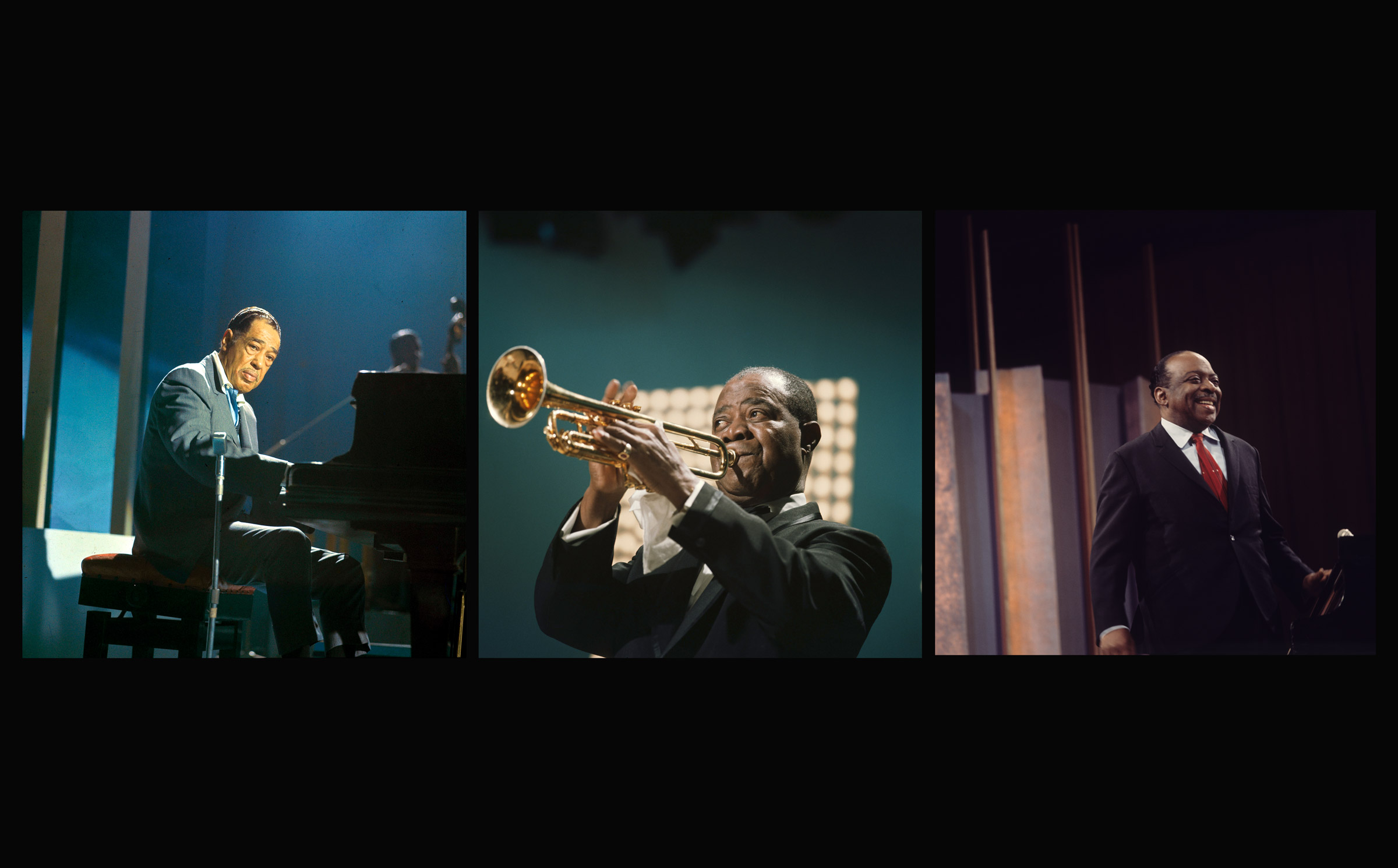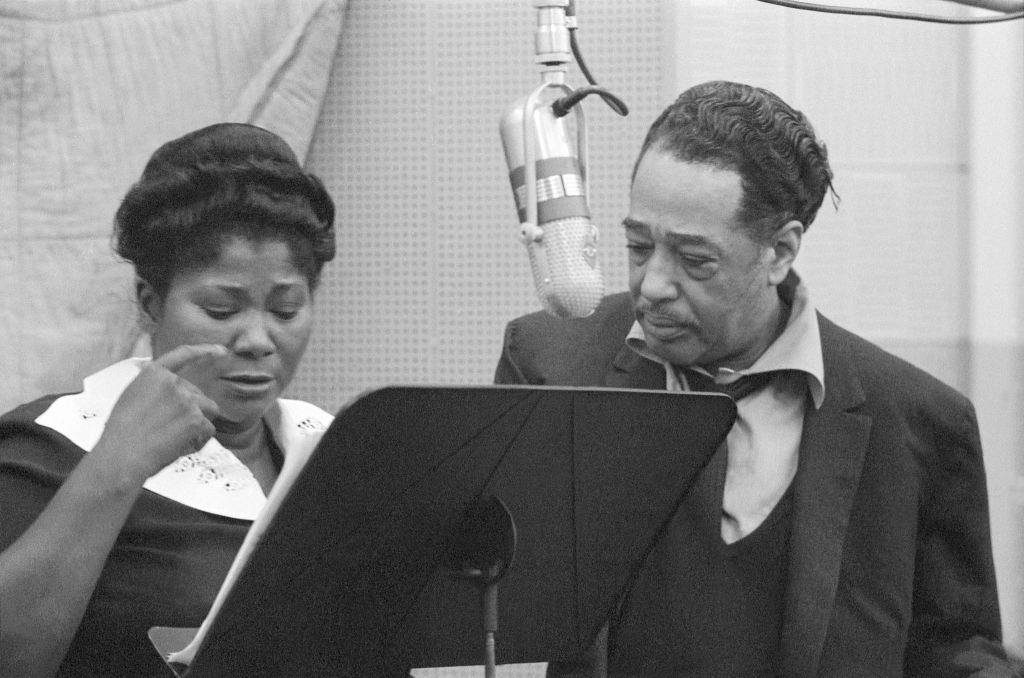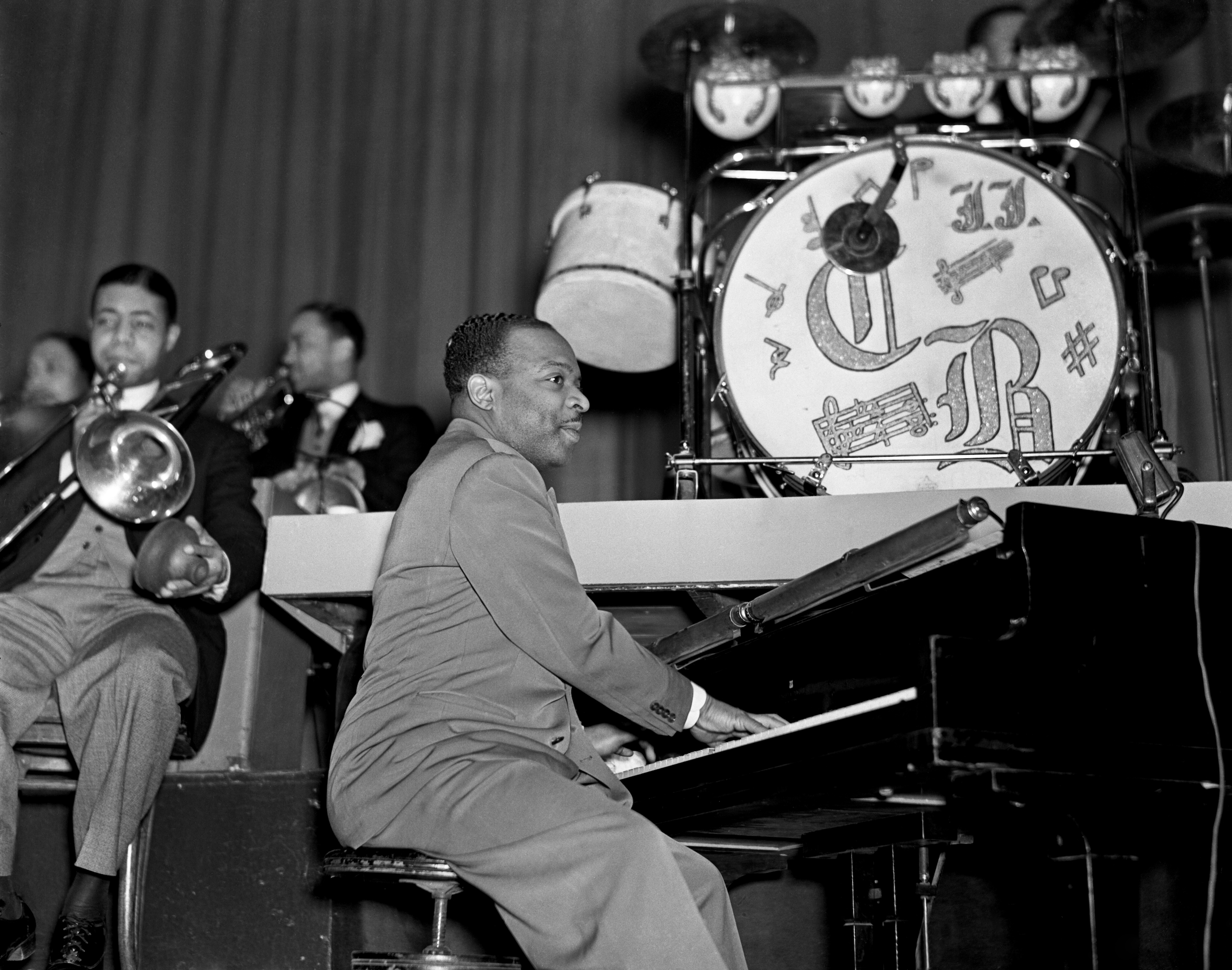
Martin Luther King Jr. knew better than anyone what it would take to pull off a revolution capable of reshaping the soul of America and at long last leveling the playing field for American Blacks.
[time-brightcove not-tgx=”true”]First you had to have followers and allies who were prepared to challenge not just racist leaders, but the cultural bedrock of a racist nation. Nobody’s outcry was more heartfelt and unexpected than that of trumpeter and vocalist Louis “Satchmo” Armstrong, who shortly after the 1957 Little Rock school crisis offered this knife-edge rebuke that made headlines from Boston to Budapest: “The way they are treating my people in the South, the Government can go to hell.” Satchmo mocked segregationist Governor Orval Faubus of Arkansas as a “motherfucker” (to make it fit for print, he and the reporter toned it down to “uneducated plow boy”), and derided war-hero President Dwight Eisenhower as “two-faced” and having “no guts” for failing early on to protect the brave Black kids desegregating Little Rock’s Central High.
A successful revolution also needed inspirational anthems and symbols. Edward Kennedy “Duke” Ellington more than rose to the occasion by composing transformative tunes like “Black, Brown, and Beige” a musical homage to the history of African-America, and writing Jump for Joy, a play that banished Uncle Tom from the stage and American life and that insisted it was time to stop turning the other cheek.
A mass movement also required money for everything from bringing people to rallies to bailing them out of jail. William James “Count” Basie wrote checks, while his wife Catherine Basie not only raised bagfuls more, but played pivotal roles in civil rights groups in New York and beyond.
Most of all, with Black people constituting just 10% of the population at the time, you needed support in white America. No trio did as much as Ellington, Armstrong, and Basie to set the table for the insurrection by opening white America’s ears and souls to the grace of their music and their personalities, demonstrating the virtues of Black artistry and Black humanity. They toppled color barriers on radio and TV; in jukeboxes, films, newspapers, and newsmagazines; and in the White House, concert halls, and living rooms from the Midwest and both coasts to the Heart of Dixie. But they did it carefully, knowing that to do otherwise in their Jim Crow era would have been suicidal. If James Brown, Chuck Berry, and Little Richard are rightfully credited with opening the door to the acceptance of Black music, it was Louis Armstrong, Count Basie, and Duke Ellington who inserted the key in the lock.
Read More: How the U.S. Used Jazz as a Cold War Secret Weapon
Whether or not young activists who dismissed the aging musicians as Uncle Toms understood that, Rev. King did. That’s why he went to Chicago to see Ellington and Jump for Joy, embraced Catherine Basie and Lucille Armstrong along with their husbands, and appreciated how the dancehall’s “joyful rhythms” and “language of soul” provided the countermelody for his movement. “Jazz speaks for life,” King wrote to the organizers of the Berlin Jazz Festival in 1964. Three years later he told the Negro National Association of Radio Announcers, “You have paved the way for social and political change by creating a powerful cultural bridge between Black and white. School integration is much easier now that they share a common music, a common language, and enjoy the same dances.”
Other leaders and luminaries joined King in recognizing the revolutionary power of jazz and its practitioners. Malcolm X unabashedly adored the Count and Ellington. Ralph Ellison preached the gospel of Satchmo. Jackie Robinson tapped his love of jazz and jazzmen to raise money for King’s Southern Christian Leadership Conference. Even Frank Sinatra, a surprising anti-racism activist, got the message.“Maybe the political scientists will never find the cure for intolerance,” said The Sultan of Swoon.” Until they do, I challenge anyone to come up with a more effective prescription than Duke Ellington’s music, and Duke Ellington’s performance as a human being.”
Armstrong’s activism was the most counterintuitive, since he was the one most disparaged as an Oreo and a sellout. That hurt because he’d worked so hard to dig out of a life of Louisiana-style racism. He’d hoped fellow Black people would acknowledge and appreciate how his becoming world-famous helped them along with him.
Armstrong and his mixed-race sidemen traveled the South long before the freedom riders did, and before it was safe to do so. No Black person had ever starred on commercially-sponsored network radio before he took over for Rudy Vallee on NBC’s Fleischmann’s Yeast Show in 1937, back when Jackie Robinson was eighteen and the only Reverend King was eight-year-old Martin’s daddy. Still in his 30s, Louis became the first of his race to be featured in mainstream American films. No jazz musician of any color had made the cover of TIME magazine (1949)or of Life (1966) until Armstrong, none had published a memoir until his Swing that Music (1936), and none had dazzled British royalty (King George V in 1932). “As time went on and I made a reputation,” he said, “I had it put in my contracts that I wouldn’t play no place I couldn’t stay. I was the first Negro in the business to crack them big white hotels–Oh, yeah! I pioneered, Pops!”

The public could see all of that at the time. We now know even more about his attitudes and activism, thanks to the release of hundreds of hours of his private tape recordings. They include not just racy jokes and random musings, but tortured reactions to what he labeled the “shame” of racism. He blasted famous Black leaders he thought were false prophets, insisting that Marcus Garvey and Josephine Baker were exploiters, not healers. But he adored Martin Luther King, making audio tapes of hour after hour of the TV coverage of his assassination in 1968. Sometimes he counseled friends to endure racial blows, others he boasted about doing just the opposite. When a white workman disrespected him, he shouted into the recorder the insults he’d shot back at the laborer, explaining, “You try to be a gentleman, they won’t let you, that’s all. I’m just showing you what we have to go through.”
Daily battles like that were exhausting, but he used his wit to mask his despair. Before a performance at New York’s Basin Street East nightclub in the 1950s, pianist Errol Garner stuck his head into the trumpeter’s dressing room to ask, “Hey, Pops, how’s everything?” Louis: “White folks still in the lead.”
Ellington’s version of subversion, while comparably non-confrontational, was more straightforward.
While the up-tempo and airy “Take the ‘A’ Train” was Ellington’s signature tune in his early years, a very different number characterized the maestro later on. The song, “King Fit the Battle of Alabam,” marked a rare occasion when he employed Satchmo-like verbal idiom and an even rarer one of him using his music to sound off on the racial violence engulfing America. Few remember the song because it played only during the six-week run of My People, a show staged in Chicago in 1963 during a centenary celebration of the Emancipation Proclamation. His libretto railed against Bull Connor, the racist police chief in Birmingham, Alabama, for violently assaulting youthful Black demonstrators with a barrage of fire hoses, club-wielding officers, and snarling German Shepherds: “King fit the battle of Alabam’ – Birmingham . . ./And the bull got nasty – ghastly – nasty/Bull turned the hoses on the church people/And the water came splashing – dashing – crashing/Freedom rider–ride/ Freedom rider–go to town/Y’all and us–gonna get on the bus/Y’all aboard – sit down, sit tight, you’re right”
While the theater world didn’t see any money-making possibilities, My People resonated with the cultural moment and with Ellington’s life journey. It was staged mere months after the violence in Birmingham, and just two weeks before the March on Washington that demanded jobs and justice for Black Americans. More significantly, it prompted the first meeting between Ellington and King Jr., who came to Chicago to catch the show.
Ellington, who had just woken up, “came down in his cashmere coat and wrap and his little pork-pie hat,” recalled Marion Logan, a mutual friend. “Martin saw us and he jumped out of the limousine, and he and Ellington embraced . . . It was a very warm embrace.” The three proceeded to the theater and watched from the director’s booth a rehearsal of the song written in King’s honor. “It was the first time Martin had ever heard that, and he was very impressed – very proud. It was quite a moment.”
“King Fit the Battle” surprised audiences because it seemed so out of character for the avowedly apolitical and dispassionate Ellington, but it wasn’t entirely unforeseen. A generation earlier, in 1941, he had scripted Jump for Joy, a musical he said was meant to “take Uncle Tom out the theater.” He left unsaid his intention that the show would end any discussion of his being an Uncle Tom.
Read More: Still Loving Him Madly
The musical’s title tune offered this optimistic liftoff: “Fare thee well, land of cotton/ Cotton lisle is out of style/Honey chile, Jump for Joy/When you stomp up to heaven/And you meet old St. Pete/Tell that boy, “Jump for joy!”/ Step right in/ Give Pete some skin/ And Jump for Joy.”
A year and a half later, Ellington debuted “Black, Brown and Beige,”his loftiest extended composition and, at forty-four minutes, the longest. It was his first concert at New York’s grand Carnegie Hall. While Jump for Joy was Duke’s effort to slay Jim Crow with satire and mockery, “Black, Brown, and Beige” was deadly earnest. He’d planned to write an opera, but when he couldn’t find backers he turned to the familiar form of symphony to tell a story unfamiliar to most Americans. It spanned the gamut of Black experiences—from slavery through emancipation, segregation, and increasing integration—incorporating music evocative of those times and places. And it drew on all the emotions—from gloom to joy, purposefulness to the patriotism that fit a country at war. “Just as always before, the Black, Brown, and Beige were soon right in there for the Red, White, and Blue,” said Ellington, who meant to educate – not alienate – the white audience he’d spent decades nurturing.

Nobody was better at infiltration and circumvention than Bill Basie. He believed in the cause of African-American rights as passionately as his brethren bandleaders, but unlike Ellington and Armstrong, Basie waged his campaign so discreetly that the FBI never considered him worthy of a file, the NAACP and the Black press didn’t give him awards or much coverage, and young activists neither attacked nor applauded. Which was just how the Count liked it.
Everyone knew that Basie could make listeners bob their feet and rush to the dance floor, but few noticed that his was the first Black band to play at Pittsburgh’s stately William Penn Hotel back in 1937. Or that just after, at Philadelphia’s Nixon Grand Theater, he solicited signatures for an anti-lynching petition. In 1939, he toured with a revue called Meet the People that took swipes at segregation much like those in Ellington’s My People 24 years later. In 1945, the Count told the managers of Kansas City’s whites-only Tower Theatre, “If you don’t want my people, then you don’t want my music.” Basie followed through on the ultimatum and turned down the gig. The Amsterdam News was so surprised and delighted that it wrote, “Associate this statement with Count Basie and automatically one would think this is the theme of a new Basie hit tune.” The Count, the paper added, “is the first of the boogie-woogie band leaders to make the drastic step. If others follow his lead, both the entertainers and the laity feel the situation can be remedied.” All of which led Basie trumpeter Sweets Edison to boast, “We started integration.”
Basie confronted the same Jim Crow outrages as Armstrong and Ellington, perhaps even more egregious ones, since his audience was blacker and poorer, with plumbers, maids, and chauffeurs instead of doctors, lawyers, and teachers. “I can’t remember when I had not experienced discrimination. That’s how the world was ever since I started performing back in the ‘20s,” the Count said. “But you don’t let that stop you if you know what you want to be.” In 1937, he appeared with Billie Holiday at Detroit’s Fox Theatre. “Detroit was between race riots then, and after three performances the first day, the theater management went crazy. They claimed they had so many complaints about all those Negro men up there on the stage with those bare-legged white girls, all hell cut loose backstage,” Holiday remembered.
Ten years later the Count was discussing business with his press agent on the corner of Broadway and 51st Street in Manhattan. “Basie took his notebook out of his pocket to make notations of several appointments,” a reporter wrote. “No sooner had he started writing than one of New York’s finest grabbed his arm, demanded to see the notebook and informed the Count that he was under arrest. ‘You bookies are getting nervier every day,’ declared the bluecoat to the flabbergasted Basie. . . John Law examined the notebook and got the shock of his life when he saw that the man he was about to arrest as a bookie was none other than the famous Count Basie.”

The low-pressure Count reached his boiling point one afternoon in the late 1950s, when his bandmates were refused service in a small tavern in Gettysburg, Pennsylvania. “Basie walked up to the manager, looked at him coldly, and said, ‘You want us to go out in the street and drink it? You want us to get arrested for breaking the law?’” reported jazz writer Nat Hentoff. “The manager was shaken but stubborn, and the musicians decided to at least leave a memory behind. The biggest members of the band – The Killers’ – Eddie Jones, Billy Mitchell, Henry Coker – began to roam around the tavern in the manner of lions deciding just which part of their prey they’d savor first. Basie watch the scene, made no move to stop it, and in fact quite evidently enjoyed the morality play. The band wasn’t served, but at least it hadn’t slunk away.”
Like Duke and Satchmo, the Count generally let his music speak for him. But he made an exception to his say-as-little-as-possible rule in 1960, in the thick of the sit-in movement. Basie didn’t join the demonstrators, but he called their activism “beautiful” and said, “They’re starting a real move and I am 100 per cent for it.” Intimidating Black leaders into backing down was not just wrong but wouldn’t work, he argued: “They’re trying to knock us down but we get right up again.” As for Martin Luther King, “Like the cats would put it, he’s saying something.”
Adapted from the book THE JAZZMEN by Larry Tye. Copyright Ó 2024 by Larry Tye. Reprinted by permission of HarperCollins Publishers.























